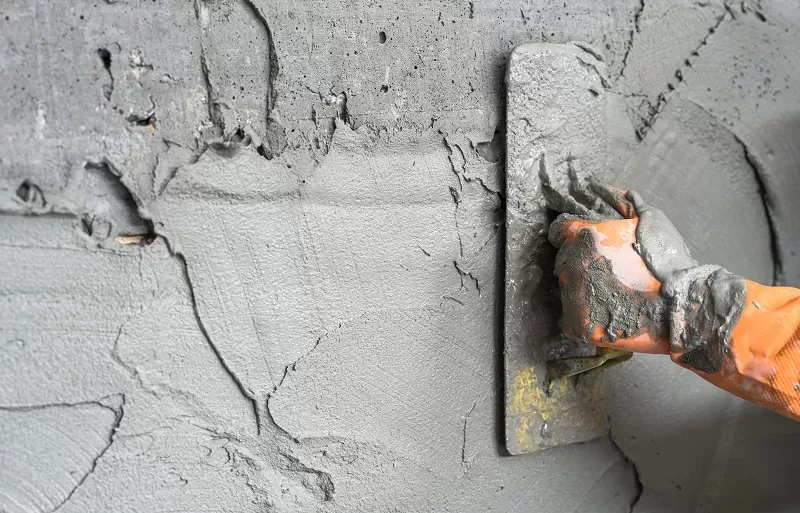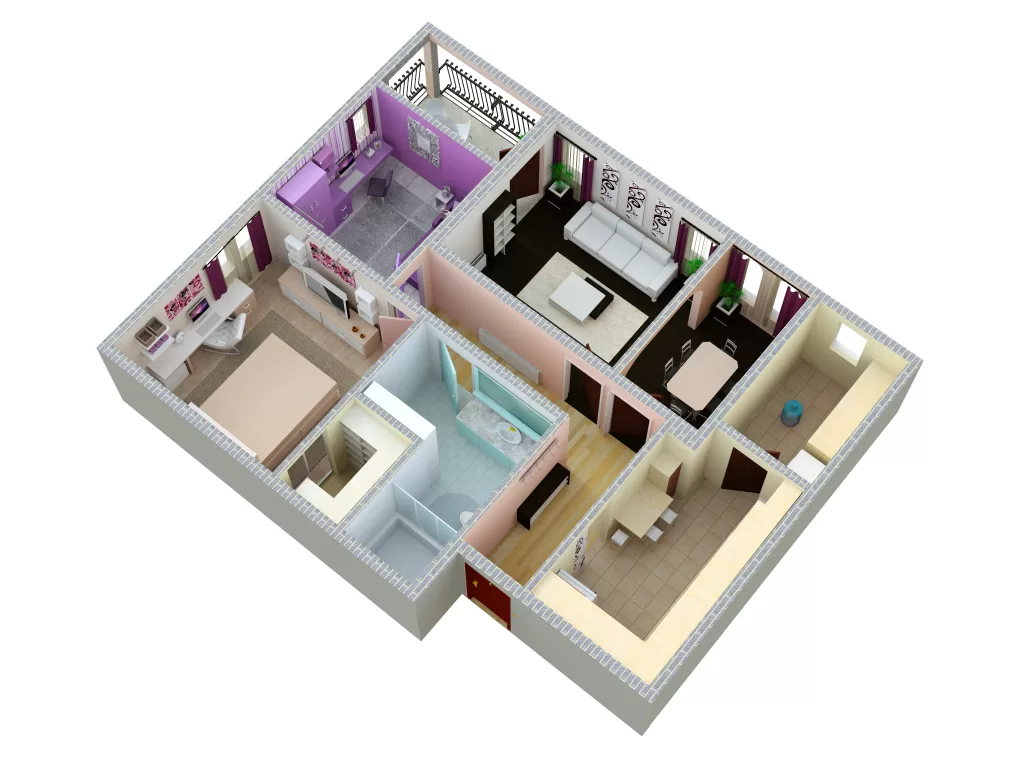A ceiling is more than just the top surface of a home. Apart from its separating two vertical spaces, a structure’s ceiling plays an important role in maintaining the light and sound in that space. Like your walls and floors, the ceiling also requires adequate strength and durability through various construction practices, one of which is plastering. Plastering is the process of using plaster to protect walls and ceilings from deterioration. In this article, you can get information on plastering ceilings and the right ratio of cement and sand for plastering.
What is Ceiling Plastering Ratio?
Ceiling plastering ratio refers to the proportion of cement and sand when mixing plaster that will be applied to the ceiling. For ceilings, cement plaster or cement plaster gauged with lime is widely used for finishing walls and ceilings of buildings.
When it comes to cement-lime plaster, cement and sand are mixed in the required proportions. Lime putty mixed with water is then added to the mix. Lime putty is obtained by slaking quick lime in water. For cement plaster, cement and sand are mixed first and then water is added to the mix.
Ideal Ceiling Plastering Mix Ratio
The Bureau of Indian Standards (BIS) has recommended a list of mixes suitable for various constructions:
| Sr. No | No. of Coats of Plaster | Cement : Lime : Sand Mix | Thickness |
| 1 | Single Coat Plaster | 1:0:3 | 10 to 15 mm |
| 1:0:4 | |||
| 1:0:6 | |||
| 1:1:6 | |||
| 1:2:9 | |||
| 2 | Two Coat Plaster | ||
| 2a | Backing Coat | 1:0:3 | 10 to 12 mm |
| 1:0:4 | |||
| 1:0:6 | |||
| 1:1:6 | |||
| 2b | Finish Coat | 1:0:3 to 6 | 3 to 8 mm |
| 1:1:6 | |||
| 1:2:9 | |||
| 3 | Three Coat Plaster | ||
| 3a | Base Coat | 1:0:3 | 10 to 15 mm |
| 1:0:4 | |||
| 1:0:6 | |||
| 1:1:6 | |||
| 3b | Second Coat | 1:0:3 to 6 | 3 to 8 mm |
| 1:1:6 | |||
| 1:2:9 | |||
| 3c | Finishing Coat | Fat lime and fine sand or marble dust in equal proportions | 3 to 5 mm |
The recommended plastering ratio ceilings is 1:4, 1 part cement and 4 parts sand. The constituents of plastering mixes may be measured by volume. Cement is measured by weight and lime, if required, is measured by volume of lime putty, or dry hydrated lime prior to making the putty. Additionally, the quantity of water for a general cement-plaster work where proportions of cement and sand is 1:3 is 70% by weight of cement. The water quantity also depends on the nature of the fine aggregates, richness of the mix, temperature and humidity at the time of mixing, lime quantities or admixtures.
More Types of Plaster for Ceiling
Besides cement and cement-lime plasters, the following plaster types can be used to finish walls and ceilings:
Gypsum Plaster
Gypsum plaster is produced by partially or completely dehydrating mineral gypsum. Gypsum is typically white in colour and in powdered form. Dry gypsum powder is mixed with water to form a slurry which can be applied to walls and ceilings using a trowel. Gypsum dries relatively faster – in approximately 72 hours. Gypsum is fire resistant and a thermal insulator. Gypsum plaster also is resistant to shrinkage facilitating crack-free surfaces.
Most gypsum plasters come pre-mixed with aggregates. Only potable water is needed to prepare the mix. For a cohesive and workable mix, the water to plaster ratio should typically be 1 part water and 1.25 plaster by weight.
Clay Plaster
Naturally found clay mixed with sand offers an environmentally friendly alternative to conventional plasters. It is non-toxic while also being durable. Clay is found in abundance and requires less energy to be processed into a plaster. Clay plaster can help prevent mould, which in turn can contribute to better indoor air quality.
Why Plastering Ceiling is Important
Here’s why ceilings need plastering as well:
- When you apply plaster to a wall or ceiling, it creates a durable finish to the wall. When water is mixed with cement, it results in a chemical reaction wherein the water escapes the cement mixture. This reaction is called hydration and strengthens the bond between the plaster constituents, consequently making the walls stronger.
- Plastering provides a smooth finish to your ceilings making it easier to apply paints. Painting the ceiling can help refresh the room.
- At the time of the final coat of plaster, you incorporate different colours or textures to give the ceiling or walls the required finish.
- Plastering with materials like gypsum is easy and requires minimal time. This, in turn, allows completion of construction or renovation projects on time.
- Plastering also provides a decorative appeal to your homes. You can mould the plaster to create an array of designs for your ceiling.
FAQs
Should I plaster my ceiling?
Ceiling is an important part of your home that facilitates proper lighting and sound in the space. Plastering keeps your ceiling protected from heat and other environmental factors. It also provides a sheen look to the ceiling.
What is crazing?
Crazing is the presence of hairline cracks in the plastered walls or ceilings. Crazing can be caused when you don’t allow the plaster to dry at its intended time. Applying plaster before the previous coat has been set can also cause cracks. Improper plastering technique can also result in crazing.
What is the difference between plastering and rendering?
While both plastering and rendering refer to providing a smooth finish to your walls, plastering is usually synonymous with internal walls and rendering with external walls.
What is the time required to cure plaster?
For maximum strength and density in the plaster, cement and cement-line plasters require proper technique and sufficient cure time. Each coat of plaster must be kept damp continuously until the next coat is applied or for a maximum period of 7 days. A fine fog-spray can be used to apply water to the walls.
What is the Indian Standard code for ceiling plastering?
The IS code for ceiling plastering is IS : 1661 – 1972. The code provides information on cement and cement-lime plaster finishes for walls and ceilings.
What is efflorescence in plastering?
Efflorescence is the deposit of mineral salts on the face of the walls caused by evaporation of water. Soluble salts like sulphates of sodium, calcium and magnesium in the concrete material come to the surface during evaporation.
*Disclaimer: The information provided above is for general purpose and should not be used as a substitute for professional advice.














